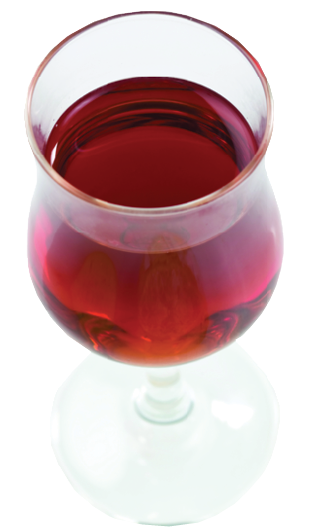
Drinking Port
To my palate, Port is toothsome — it somehow seems to satisfy and delight all on its own. Back when I smoked a pipe (and nothing looks dopier than someone under the age of 40 smoking a pipe, let me tell you) I thought it was the perfect accompaniment. Not that I’m recommending the demon nicotine as a side-dish for your Port, understand, but it seemed the slow and contemplative nature of pipe smoking fit very neatly into the rich and warmly comforting feeling engendered by sipping Port — until I wound up coughing like an exploding dragon.
If you’ve got an adventurous palate (or you think you’d look as pretentiously geeky with a pipe as I did), the classic pairing with Port is Stilton blue cheese. Produced in the English counties of Leicestershire, Nottinghamshire and Derbyshire, this blue-veined cheese is ripe and powerful, but has a very nutty character, and good acidity. Compared to Danish Blue it’s less salty and more creamy, and it is much mellower than Italian Gorgonzola. Paired with the nutty sweetness and rich phenolics of Port, Stilton is transformed into a delicate, mushroomy extravaganza of creamy goodness — if you like that kind of thing. Toss in a few toasted walnuts or (my favorite) pecans and you’ve got a simple but perfect set of nibbles for your noble Port.
The one food pairing where Port shines like a hedonic beacon of pleasure in the gastronomic ocean is with chocolate. Port is sweet enough, and has enough tannin and alcohol to not only stand up to chocolate, but to subtly complement it. A glass of tawny Port with a simple milk-chocolate truffle or a rich ruby with a steaming hot chocolate lava cake is my idea of heaven with a quick tour of Nirvana thrown in.
Drinking Sherry
Dry Sherry really deserves to be served lightly chilled (55 ºF/13 °C). Too cold and it can seem numb and alcoholic (sounds like me on a long weekend!) and too hot and it can be very flabby and soft (sounds like . . . hey!).
Sweet Sherry can be consumed much like Port, at cellar temperature (65 ºF/18 °C) where the richness can be fully appreciated, and the lush textured finish can shine out.
Food pairing for dry Sherry is pretty simple: the classic is soup or consommé, but if you’re like me you won’t be able to recall the last time you sat down to a steaming bowl of consommé — if ever! Much better and more common in Spain is salty, intensely flavored snacks: dry, salty cheese (Asiago or Fontina are great) an assortment of olives, very spicy grilled sausages or dry cured ham (Spain is the land of ham, believe it or not) all make great accompaniments.
Sweet Sherries are usually appreciated on their own, however I really enjoy a piece of shortbread with mine (blame my maiden Aunts and endless games of Whist). While they can be served with dessert, I think having both is gilding the lily — and it doesn’t leave enough room for a second glass.
Drinking Icewine
Icewine is so sweet, and so high in acid that there are few foods that can actually stand up to it. Perhaps it’s best to think of this wine as dessert, instead of with dessert.
However, there are a couple of flavor combinations worth trying. Roquefort, Stilton, or other veined ripe cheese—the more corrupt the better — can work, as can hazelnuts, or biscotti and a shot of espresso. You can also substitute Icewine for sherry in a traditional English trifle recipe, for an intense and decadent change.
The one food that works with fully matured and mellow Icewine is crème caramel. The rich, creamy custard and the smooth syrupy caramelized sugar provide a brilliant counterpoint to the zip and sweetness of the wine. (Can you tell I married a pastry chef? You could if you could see how tight my clothes fit me.)
Perhaps the best way to enjoy Icewine is with your feet up beside the fire, with a good companion at your side, and the warm sense of accomplishment that comes from doing it yourself.




